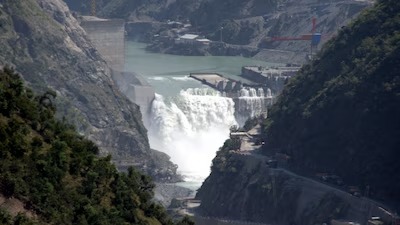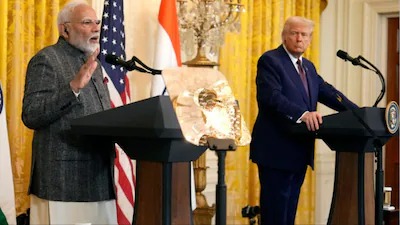New Delhi: In a landmark move following the suspension of the Indus Waters Treaty, the Indian government has revived plans to construct the long-awaited 1,856 MW Sawalkote Hydroelectric Project in Jammu and Kashmir. Originally conceptualised in the 1960s, the project will tap into the hydropower potential of the Chenab River, and marks a major step in India’s strategy to assert its water rights and accelerate infrastructure development in the region.
The proposed project will be built near Sidhu village in Ramban district, strategically located between the Baglihar (upstream) and Salal (downstream) hydropower stations. It spans both Ramban and Udhampur districts and lies approximately 120 km from Jammu and 130 km from Srinagar, making it accessible from both cities.
According to tender documents, the project will feature a 192.5-metre-high Roller Compacted Concrete Gravity Dam, with river diversion ensured via three horseshoe-shaped tunnels. The main underground powerhouse will be constructed on the left bank of the Chenab River, housing eight turbines of 225 MW each, totalling 1,800 MW, while an additional 56 MW power unit will handle released environmental flow, bringing the total installed capacity to 1,856 MW.
Designed as a run-of-the-river scheme, the project allows for flood diversion of 2,977 cumec in the non-monsoon period and 9,292 cumec during monsoon. The three diversion tunnels will be 965 m, 1,130 m, and 1,280 m long respectively. This design ensures both energy efficiency and minimal ecological disruption.
The Chenab River, one of Jammu and Kashmir’s major rivers alongside the Indus and Jhelum, originates in Himachal Pradesh and has a catchment area largely above the snowline—ideal for consistent hydropower generation. The river basin lies between the Great Himalayas, Pir Panjal, and Shivalik ranges, giving the project geographical and hydrological advantages.
The Sawalkote project was originally envisioned by the Central Water Commission (CWC), with initial geological surveys conducted by the Geological Survey of India between 1962 and 1971. Despite the submission of a Detailed Project Report (DPR) as recently as 2018, the project had remained stalled—until now.
This renewed push comes just months after India’s decision to suspend the Indus Waters Treaty on April 22, citing Pakistan’s persistent politicisation of technical issues and misuse of treaty provisions. The suspension has enabled India to expedite pending hydro projects without the restrictions previously imposed by the treaty framework.
Beyond energy generation, the project has strategic and geopolitical significance. By asserting control over the Chenab waters and moving forward with long-delayed projects, India is signalling a shift in its water diplomacy—prioritising national interest and energy security over prolonged bilateral delays. Once operational, the Sawalkote project is expected to boost power availability in northern India, contribute to economic growth in Jammu & Kashmir, and reinforce India’s self-reliance in clean energy production.
Trending
- Goa Govt to Draft Coastal Erosion Mitigation Plan; Proposal to Be Submitted to Centre
- Oppn Uproar Over Coal Exports, Green Cess, Govt Denies Violation
- Bumrah May Be Considered for Tests Only If Fully Fit to Play Entire Series: Report
- Macau Open 2025: Lakshya Sen, Satwik-Chirag Pair Advance to Quarterfinals
- India Coach Backs Shubman Gill After Costly Run-Out: “These Mistakes Happen”
- Karun Nair Shines on Test Comeback, Coach Praises His Versatility and Resilience
- St Rock YC Majorda Edge Past Parish Youth Nuvem in Thrilling Tiebreaker to Enter Quarterfinals
- Elon Musk’s Starlink Receives Approval to Launch Satellite Internet in Indi








